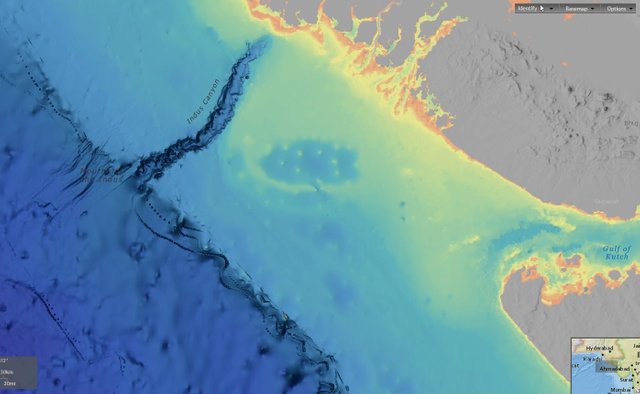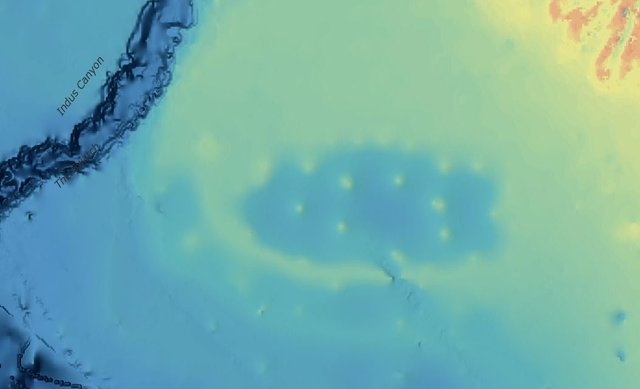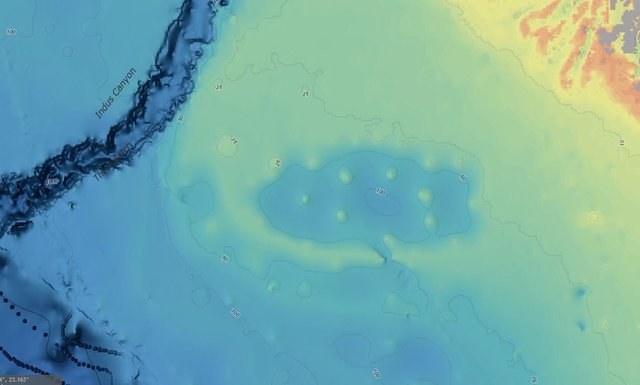Dwarka: The Lost City of Krishna
Dwarka, or Dvārakā, or Dvāravatī, appears in Hindu scripture and is said to have been a city where Krishna resided.
In the Bhagavata Purana, the city is said to have contained 900,000 royal palaces, all constructed with crystal and silver and huge emeralds, and furnishing with gold and jewels.
And the city is thought to have been lost to the sea. In the Mausala Parva of the Mahabharata, Arjuna describes the submergence of Dwarka as:
"The sea, which had been beating against the shores, broke the boundary that was imposed on it by nature. The sea rushed into the city. It coursed through the streets of the beautiful city. The sea covered up everything in the city. I saw the beautiful buildings becoming submerged one by one. In a matter of a few moments, it was all over. The sea had now become as placid as a lake. There was no trace of the city. Dvaraka was just a name; just a memory."
Since then, there have been ruins found near modern day Dwarka. These are considered to possibly be the lost Dwarka.

Its worth noting that many of the images said to be of the region west of India as this ancient Dwarka are actually images from artificial ruins produced as artistic expressions, at a location called Neptune Memorial Reef off the coast of Florida.
For instance, this lion is from Neptune Memorial Reef and is not found off the coast of India:

Regardless, because the basis for the existence of this lost city is from scripture, the description of the city within scripture is significant. There have been no palaces made of crystal, silver, gold, and jewels found. Without these, there is no reason to suspect just any structure, simply because of its general location, to actually be the Dwarka of scripture. Rather, there is every reason instead to conjecture them to be remnants from others who also built along the western coast of India, and not necessarily at the same time in history.
Intriguingly, there have, however, been ruins found. In Bet Dwarka, S. R. Rao and others found a wall in the ocean and stone anchors. There is distinct evidence that there was structure built at a time when the sea level was lower, which in and of itself is surprising as that would mean the entire coastline of the globe has materially changed across time, where it stabilized at certain levels and then changed.


Several studies suggest the anchors to be from the Bronze Age, identical to those used in Cyprus and Syria.
In short, while findings of ruins in the ocean are significant in all instances, the ruins of Bet Dwarka cannot be the Dwarka of old.
There are some ways we can improve our ability to potentially "find" such a place. Firstly, it helps to know Earth's history with more precision.
The Earth expanded. In its distant past, but still only thousands of years ago, it was a single landmass, having no oceans. The Earth then, due to its magnetic field being composed of particles that were being caused to merge at the center of the planet, built up internal pressure pushing outward against the crust until it fractured and the whole of Earth grew to a large radius.

This is when the global flood spoken of across the world occurred. Lighter molecular weight atoms were more able to be formed in abundance and so hydrogen, oxygen, and carbon were each produced in larger quantities. This led to water. Water within the planet carved outward until it could escape to the outside.
The Earth, then, began to stabilize into a balance of internal and external pressure because it was able to vent in the process.
As the Earth expanded, waters flooded the globe until the ocean floors were spread sufficiently to allow water to drain. And so, the Earth stabilized after the flood.
And those who made it through the flood started to rebuild wherever they found themselves. Especially along the coastlines.
The problem was, the Earth was not done releasing water. Rather, it had released the bulk of the pressure and material that came outward in a burst. It appears as if the Earth, then, had a sort of aftershock of water release where the sea level drastically rose again.

Imagine the Earth's crust fractures apart and gaping fault lines form so vast that they become the entire oceans. The continents, floating on this material like ice cubes, are at intrinsically higher elevations than the ocean floor being formed. All water from the continents is making its way into these pits.

It takes a lot of water to fill them, and until the Earth has reached a new equilibrium the water continues to flow into these pits. Initially, there is a sort of cliff. Like you can literally fall off the edge of the Earth, even, for a short period of time. Maybe the concept was based off of a time in history when that was a possibility. While the oceans are still filling up and have not reached the elevation of the continental shelf.
But then one day, it did reach the elevation of the continental shelf. And it began to flow over the lowest regions of the edges of the continents. And anyone who built their homes in those regions were pushed out by a rising sea.

So. What this allows for us to consider is that Dwarka would not have been positioned at the current coastline. While we move outward from it slightly, we still consider the current coastline to be of some importance.

Rather, it is more so the forced after effect and not necessarily representative of any precision in the location of ancient Dwarka.
If we consider that there was a time when the ocean floor was about 100 meters lower, then we can also suppose that such a society would have built their city near water. Further north along the coast of India is an ancient river that carved its way through the land at a time when the sea level was lower.

Interestingly, if we use bathymetric map and add color shading relief, suddenly out of the fog appears a distinct structure:
At the center of the structure is a reduced elevation, as if there was a time in which pressure was only applied to this location and not the surroundings because a lake was present. At the mouth of the structure, almost as if where a gate could be positioned, is a single opening.
Could this region be where we find the true ancient Dwarka?


